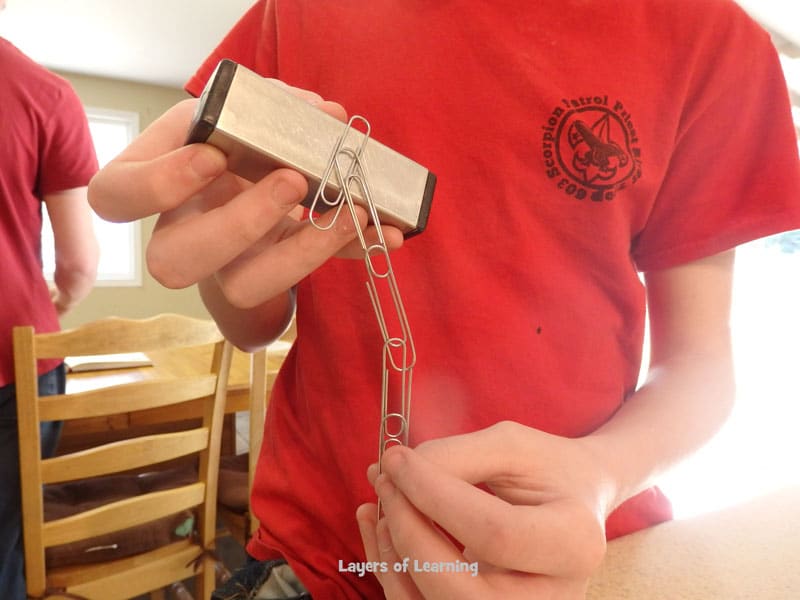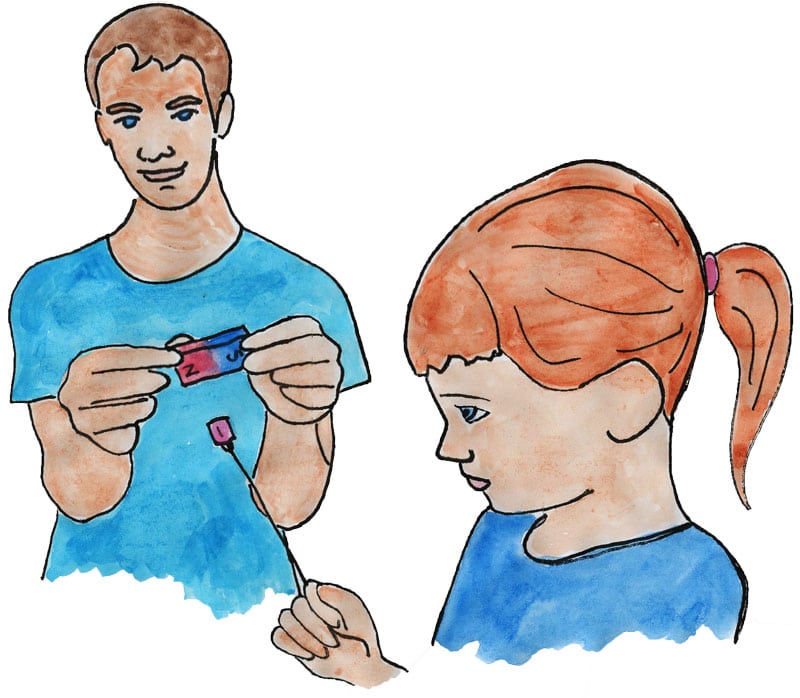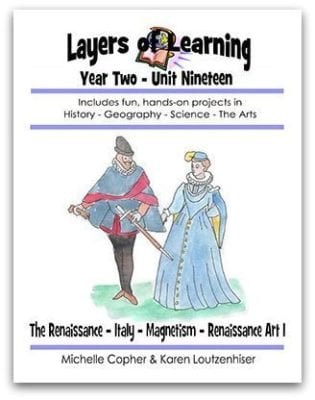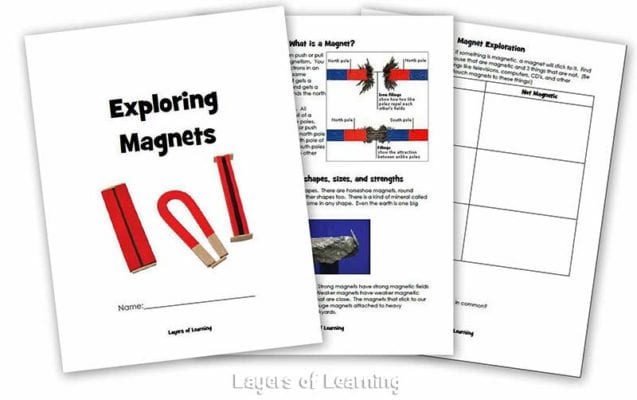This exploration is for all ages, as the colored smilies show. You can do the magnetism experiments with your whole family together!



The magnet experiments in physics are from Layers of Learning Unit 2-19 about magnetism. Layers of Learning has hands-on experiments in every unit of this family friendly curriculum. Learn more about Layers of Learning.
Magnets attract other magnets and metals because on an atomic level, the electrons are all lining up and facing the same direction in the metal of the magnet. The electrons are all spinning the same direction. So that one end of the magnet is positive and the other negative (also known as the North and South poles).

Step 1: Library Research
Before you begin experimenting, read a book or two about magnetism. Here are some suggestions, but if you can’t find these, look for books at your library about magnets and magnetism. The colored smilies above each book tell you what age level they’re recommended for.
As Amazon affiliates, the recommended books and products below kick back a tiny percentage of your purchase to us. It doesn’t affect your cost and it helps us run our website. We thank you!

What Makes A Magnet?
by Franklin M. Branley

The Attractive Story of Magnetism With Max Axiom
by Andrea Gianopoulos
Step 2: Magnetism Experiments
You will need several different types of magnets, paper clips, small objects you can test for magnetic properties, air dry or bake-able clay, and straight pins.
Magnet Play
To introduce magnets go around the house finding things that a magnet will stick to. Discuss which things are magnetic and which are not. You might want to explain that magnets will ruin TV and computer screens, CD’s, and other electronic equipment. Also keep an eye out for magnets in use in your house.
Then just let your kids play with magnets.
Make a Magnet Boat
- Get a small piece of clay and shape it into a boat.
- Let it dry or bake it according to instructions on the package.
- Glue a small round magnet to the bottom.
- Place your boat on a table and using a second magnet and holding it under the table, make your boat race around without touching the boat with your hands.
Magnetic Tower
- Use a magnet to hold up one paper clip, suspended underneath
- Keep adding paper clips, one at a time, until the magnet will hold no more.
- Have a contest with your siblings to see how many paper clips you can suspend from your magnets.

Step 3: Show What You Know
Print the Exploring Magnets book for your kids to fill out. It includes experiments to try. Have them complete the booklet and put it in their science notebooks.
Additional Layers
Additional Layers are extra activities you can do or tangents you can take off on. You will find them in the sidebars of each Layers of Learning unit. They are optional, so just choose what interests you.
Additional Layer
If you have an old motor, from a broken vacuum or something, let your kids take it apart and make a mess, before you throw it out.
Motors use magnets to function.
Additional Layer
Compasses are related to magnetism, they use the earth’s magnetic field to work. A small piece of metal, floating freely will line up with the earth’s magnetic field.

Learn more about compasses and how to use one.
Additional Layer
Magnets were discovered by the ancient Greeks (as far as we know). Because there was a lot of magnetite, a naturally magnetic stone lying around Greece.

Learn more about the history of magnets.
Get a Free Unit
Choose between the first unit in each Layers of Learning subject to try for free when you sign up for the newsletter.
We never spam and you can cancel your subscription at any time.










